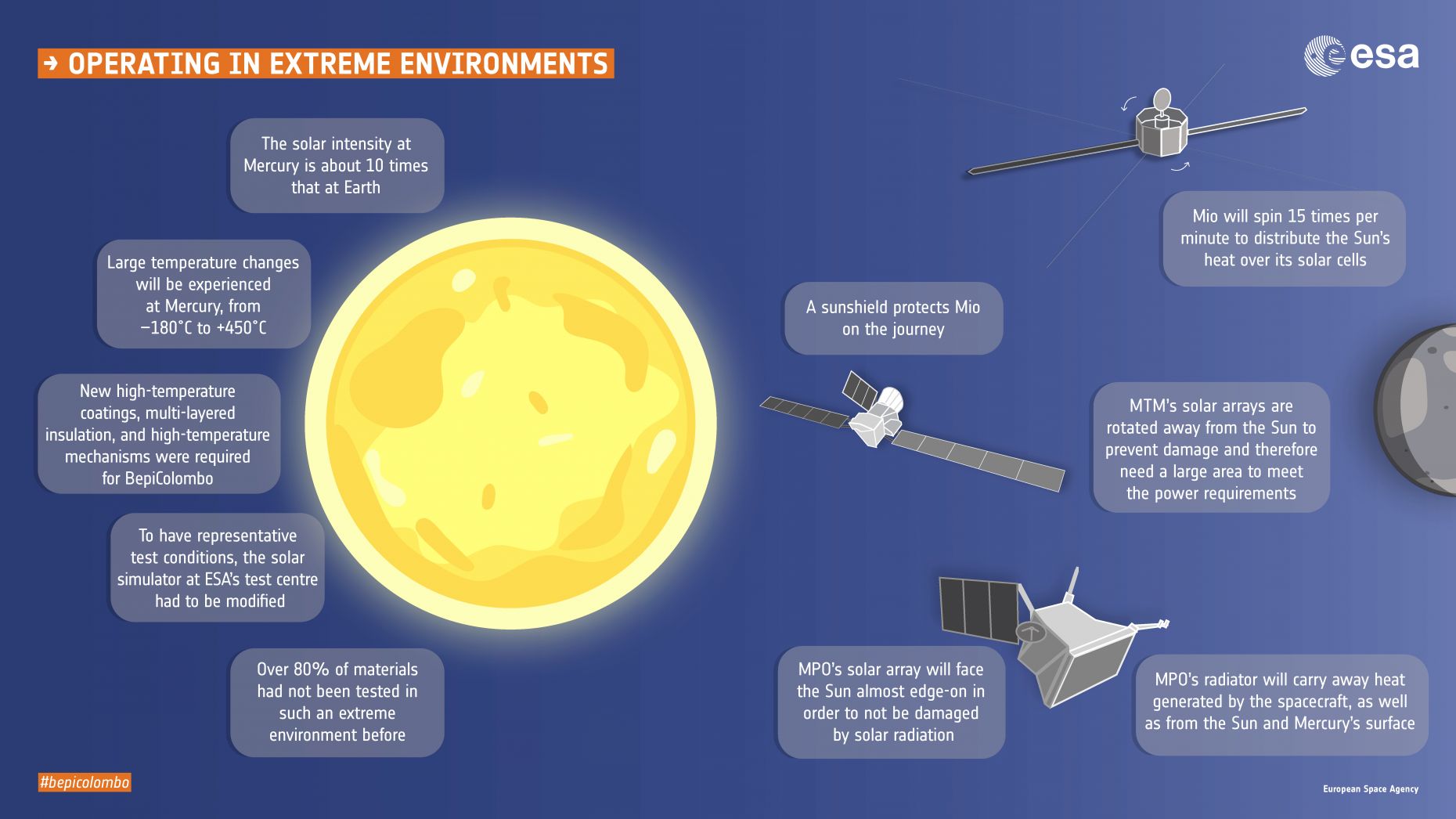ESA probes almost in parallel at Venus

"This was not actively planned. Now the scientists are quite happy because they get three data sets of Venus from different angles, which is a first for them," says Simon Plum, head of ESA's mission operations at the control center in Darmstadt. "The fact that you can observe Venus from three different angles is unique."
Fast rendezvous due to delays
Data sets that can also provide insight for future missions, yes - a mutual photo shoot, no. "We had investigated that, but it doesn't work, they don't get close enough for that." The fact that the rendezvous is nevertheless close is due to mission delays.
"Solar Orbiter" will fly past Venus at a distance of 7,995 kilometers at 6:42 a.m. (CEST) on Aug. 9. The following day, on the opposite side of the planet, "BepiColombo" will reach its closest distance at 3:48 p.m. at an altitude of just 550 kilometers, which is only slightly more than the distance between the International Space Station (ISS) and Earth.
According to the German Aerospace Center (DLR), Venus' atmosphere consists mainly of carbon dioxide, which leads to a significant greenhouse effect. According to the report, temperatures on the inner neighboring planet in the solar system are around 470 degrees Celsius day and night. The composition of the atmosphere is the subject of investigations by the Japanese probe "Akatsuki". According to the Max Planck Institute for Solar System Research, "BepiColombo" and "Solar Orbiter" are also collecting valuable data.
Still small course corrections
Plum and his team in Darmstadt are not worried. "We are now trying to make the best of this lucky coincidence." They have teams of specialists to control the probes, he said. "That's not more effort, but it's also not less." Still, teams could not operate at full strength at the control center because of the Corona pandemic. For both missions, he said, there are still small course corrections in advance.
During the flyby, there are no more possibilities to intervene anyway. For Venus, there is a ten-minute data delay. But: "We are well prepared. Something unforeseen can always happen, but that is the normal risk," says Plum. A collision can be ruled out with certainty.
The European space agency says it currently controls 25 satellites, 22 from the control center in Darmstadt. The "BepiColombo" space probe started its seven-year journey to Mercury, the planet closest to the sun, in October 2018. With two satellites on deck, it will study the surface and magnetic field of the celestial body from December 2025. The joint European-Japanese project, with total costs of around two billion euros, is intended to help understand the origins of the solar system.
Braking by flyby planets
The "Solar Orbiter" space probe of ESA and the U.S. space agency NASA, which cost around 1.5 billion euros, was launched in February 2020 from Cape Canaveral in the U.S. state of Florida. Ten scientific instruments are on board the 1.8-ton orbiter. Researchers hope to gain new insights into the sun and its magnetic field. "Solar Orbiter" is to fly to within 42 million kilometers of the sun.
The probe has already recorded the first films of particle eruptions from the solar atmosphere. Such strong solar winds can influence the so-called space weather. On planets with atmospheres, the particles can trigger auroras. But they can also lead to technical problems, such as the failure of navigation systems or damage to satellites.
Both probes will fly past planets several times on their journey in a planned manner in order to be slowed down. The "Solar Orbiter" will pass the Earth for the last time in November. Without these maneuvers, the probes would continue to accelerate toward the sun due to gravitational pull and most likely miss the star, Plum says. "We have to slow them down so they can swing into the appropriate orbits."

